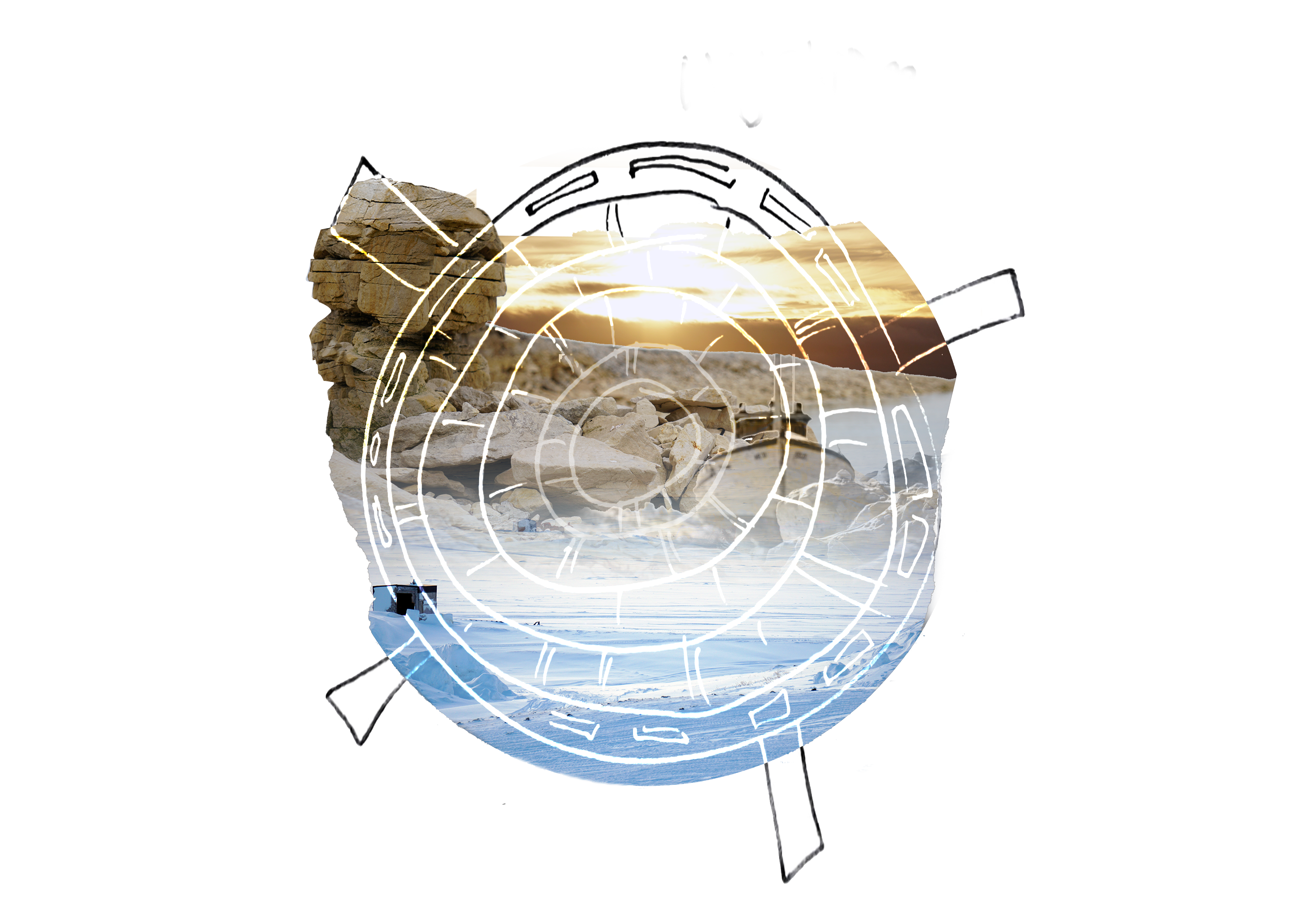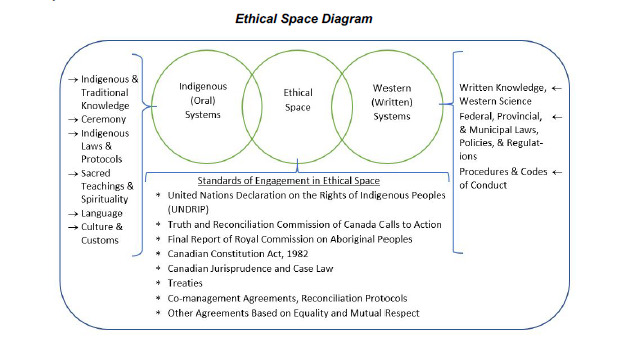The ESE (Space)

You have found a vista. A vista is a site from which a particular view is offered. They allow for a prospective ethics, and to make meaningful decisions, when called upon. Vistas nevertheless do not provide all-knowing insights. They are partial perspectives that need to be reconsidered per series of events.
In this particular case, you are presented with the guiding principles of the ‘Ethical Space of Engagement’ (ESE), as proposed by Sturgeon Lake First Nation elder Willie Ermine.[1]
The ESE, is a “third space” approach, through which differentiated nations or collectives might negotiate ethical encounters with each other in an ‘ethical’ space that belongs to neither. Encountering each other in the "ethical space" is a determinately material affair that derives from practice accordance with the principles of ethical engagement. What makes a space ethical are thus not so much its particular physical attributes, but rather the ways in which such space comes to matter.
Figure 1: The Ethical Space Diagram, originally published by the IISAAK OLAM foundation (2019). Re-used with permission.
Aesthetic action, as a method of creative practice that engages material and sensuous encounters between bodies and the affective forces created in such actions may hold possibilities to understand how ethical may come to matter in different ways.
"Return to Cut 2" and see if the actions this cut guides you along could be made intelligible as an ethical space of engagement.
- ↑ Ermine, W. (2007). The ethical space of engagement. Indigenous Law Journal, 6(1), 193–203.

